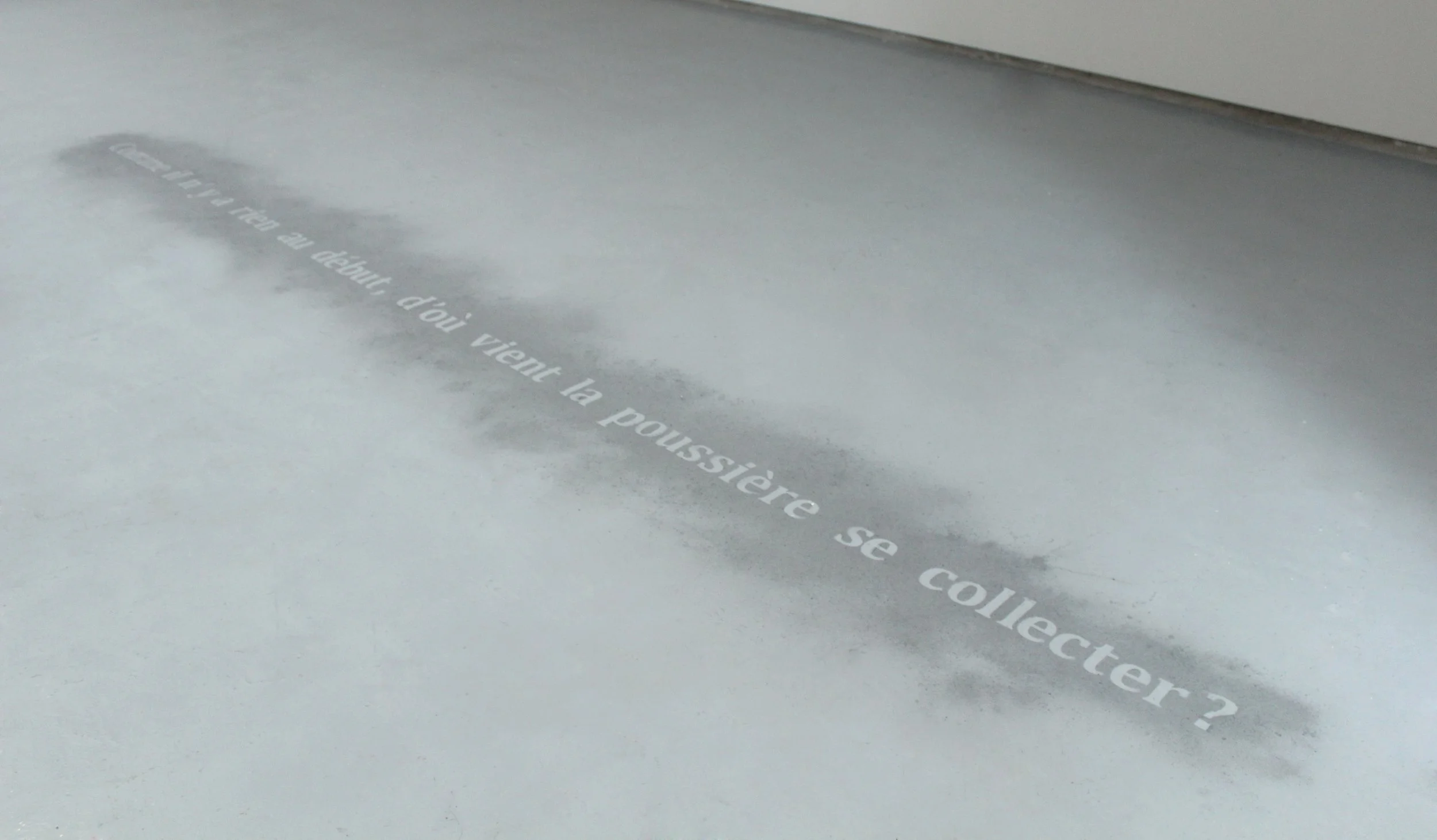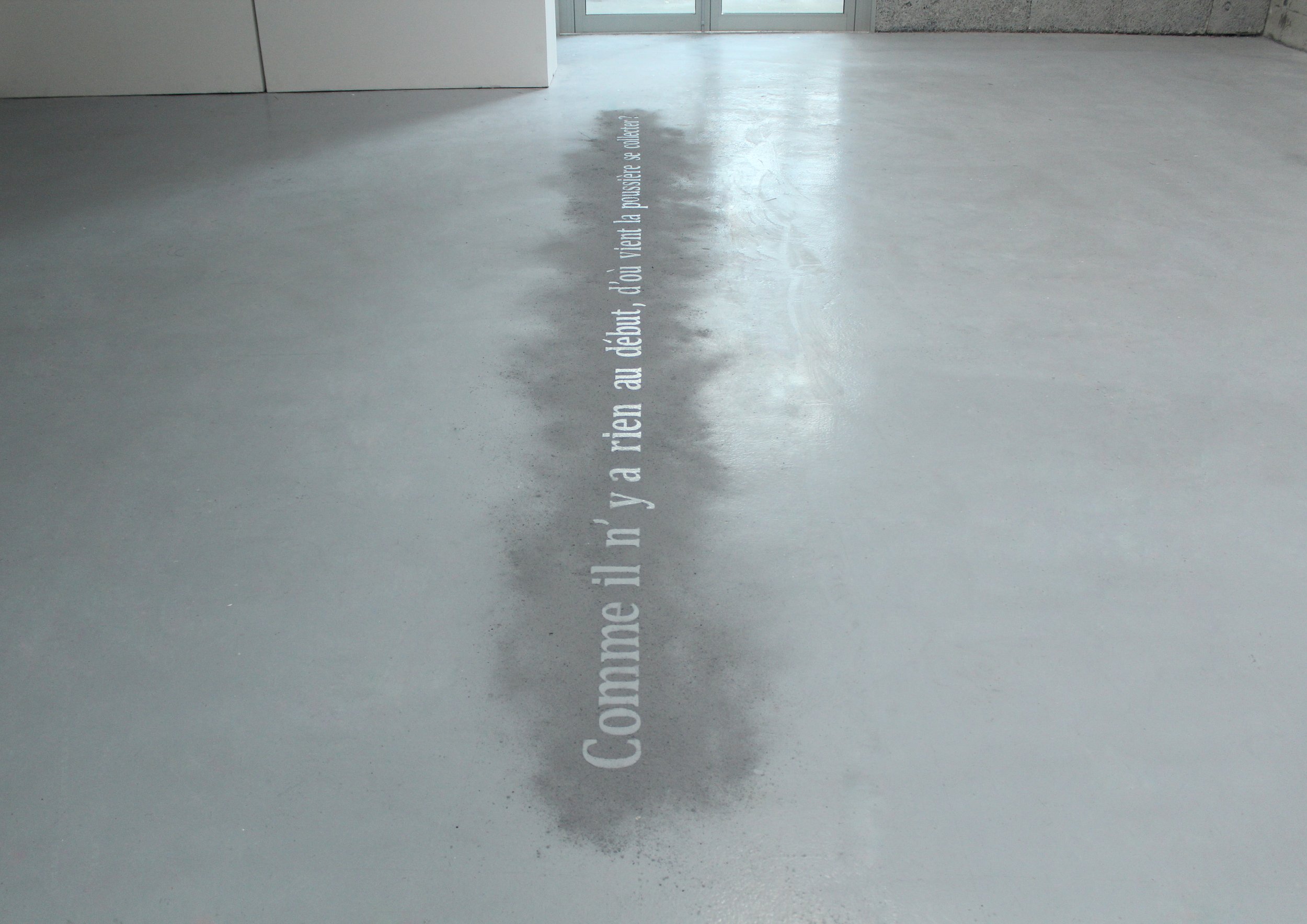Interroger la poussière (Asking Dust)
The sentence “Since there is nothing at the beginning, where does dust come to gather?” is not looking for a physical answer. It opens a larger proposition: if the origin is empty, how does accumulation even begin?
Dust here behaves like an involuntary archive.
It does not record a single event but countless imperceptible ones: fragments of time, traces of passages, forgotten gestures. Each particle appears without intention, as if the world produces history without noticing it.
The clean, stable text contrasts with the irregular matter that partly veils it.
The letters know what they are saying.
The dust does not know why it gathers.
Between them lies a tension: clarity and blur, language and the unconscious, the initial void and the residue that insists on remaining.
The work reverses the usual logic: it is no longer the human observing the dust, but the dust revealing what we no longer think to see.
It is not waste, but the silent deposit of time that never asked to be remembered.
To ask dust is to question everything that forms without intention, everything that persists despite forgetting, everything that slowly fills the void.
It is asking the smallest things where they come from, knowing they have no memory of their own.


